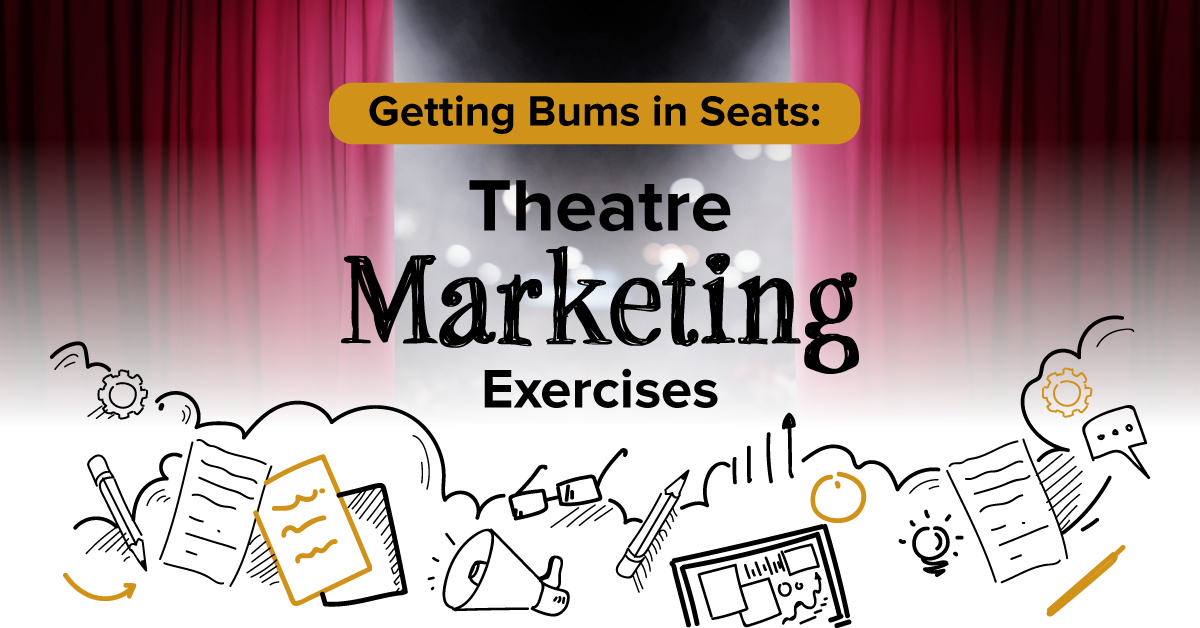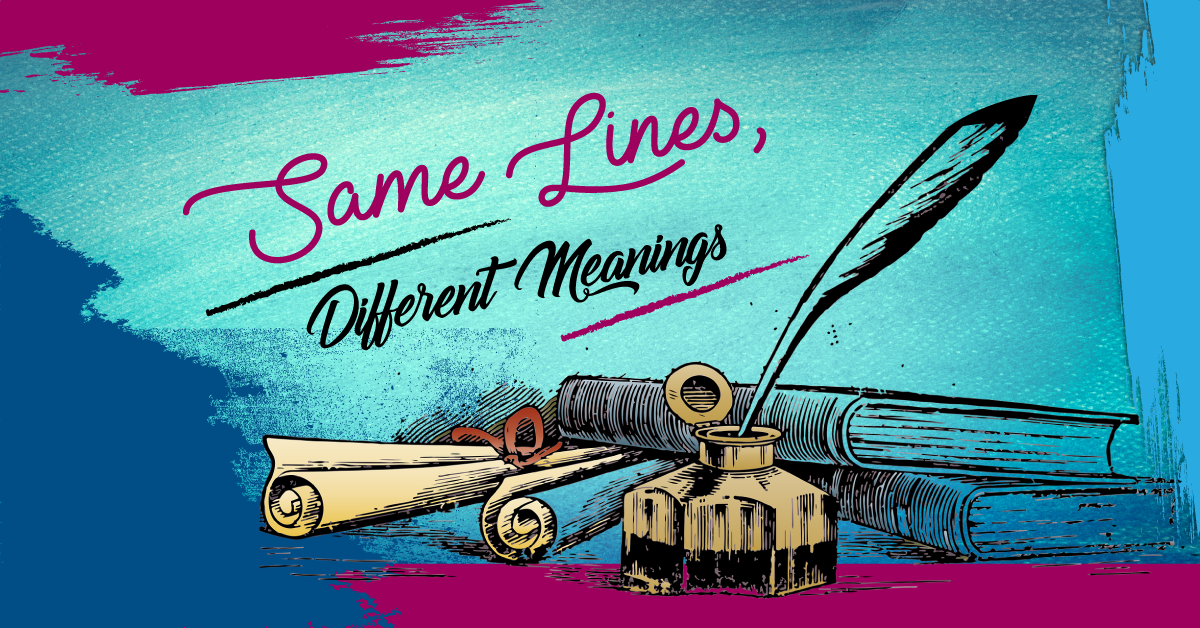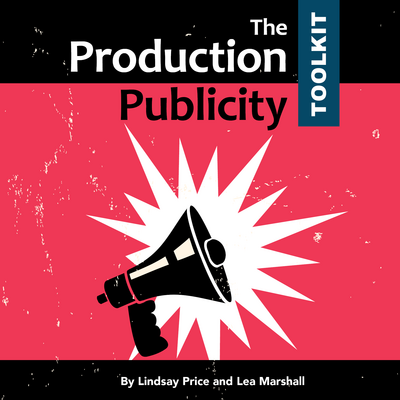The Dread Pirate Sadie: All the pirates, sword fights, and unforgettable characters - now in a competition-length version!
Getting Bums in Seats: Theatre Marketing Exercises
What is the difference between marketing and advertising? Marketing is the process of identifying potential customers and getting them interested in your product or service — in this case, the show you are producing with your student actors. Marketing involves communicating to, connecting with, and actively engaging the target audience. Advertising falls under the umbrella of marketing, because advertising activities (such as radio, television, print, or social media advertisements, as well as in-person events) all help with marketing goals. In short: advertising is one facet of the marketing package.
So, what’s our overall goal when marketing a show? In colloquial terms, it’s to “get bums in seats,” which just means to get audience members in to see your show. You and your students can create the most compelling, thrilling, entertaining theatrical piece imaginable, but you definitely need to have people come and see it!
Challenge your students to use their business brainpower and have them complete the following theatrical marketing exercises. You can use these exercises as theoretical lessons, or actually have your students work towards marketing their upcoming production to potential audiences. Let’s go!
1) Identify your audience.
Take a piece of paper and fold it in half vertically, so you have two columns. In the left column, write “Who is your ideal audience?” Brainstorm answers to the following questions: How old are they? What types of shows do they like? What do they do in their spare time? How much money do they have to spend on tickets? Add any other details you think are relevant.
In the right column, write “Who is your actual audience?” Answer the same questions from above, using what you know about the people living in your school district who are likely to come see your school’s production.
If you have any data about ticket sales or audience facts from previous productions, see if your students can look at the data and extrapolate any useful information from it. (For privacy purposes, don’t share any personal information such as names or contact information about your previous patrons with your students. Stick to quantifiable information, like how many adults versus students versus seniors attended, did they come to a matinee or an evening performance, did a play or a musical sell more tickets, etc.)
2) Choose a potential show.
(For a theoretical project; if your students are working on marketing a show you’re actually producing, feel free to skip this step. Or, you could have your students complete this step anyway as if you hadn’t already selected the show.)
Have students pair up and decide what shows they’d like to produce. Here are some posts that can help your students with show selection: Choosing a Play for Production, Top 5 Rules for Choosing a Play for Performance, Choosing Shows You’re Passionate About, and Putting on a Class Production: What To Produce?.
Have students complete a SWOT analysis or project pitch to convince the rest of the class that their show should be the one selected to pursue. Once each pair has a proposed show and an analysis, as a class, narrow down your options and decide which show you’ll focus your marketing campaign on.
3) Compare and contrast.
Compare your selected production to your ideal and actual audience lists. Do you think it will appeal to either or both of your potential audiences? Why or why not? Answer the following questions:
- What makes THIS production a must-see?
- What forms of advertising can you employ, and for what audience? Radio? Billboards? Social media? Snail mail? In-person events? (Grandma Sally may not see the show on social media, but she might hear about it on the radio, whereas Micah from Close By High School may have seen a video on Snapchat advertising the show.)
- What other methods could you employ to reach your ideal and/or actual audience lists?
- If you feel that your show would appeal to only your ideal audience (not your actual audience), how can you present the show in a way that would be more appealing to your actual audience?
4) Make a choice.
Students will complete two of the four following tasks, as well as the “One More Choice” task (for a total of three tasks out of five). Students may complete additional tasks for extra credit, as time permits. Remember to tailor your work towards the specific audience members whose attention you are trying to grab.
Tagline exercise: Create a catchy tagline (a short piece of text meant to capture the essence of your product or service) to advertise your show. It can be a line or lyric from the show, but you can’t use an already established tagline from an existing marketing campaign for that show.
Branding exercise: Design an overall visual look for your show’s print media (posters, social media profile photos and headers, logo, etc.). What colours, fonts, and images will you use to create a cohesive look?
Scripting exercise: Write a script for a 30-second commercial (radio or television/social media) to advertise your show. Bonus points if you actually create the audio or video ad!
In-person exercise: Plan a live, in-person event to publicize your show. Will you have your cast walk in a parade? Hold a flash mob at the local mall? Hand out flyers during a school event? Run a fundraiser for a charity related to an issue in the show? How will you grab your audience’s attention and make them remember to buy tickets?
One more choice: Choose one of the 10 Ways to Publicize Your Show and complete that task. Write a detailed journal entry about how you went about completing the task.
5) Take action!
If your students are working on an actual show your school is producing, use the work they’ve completed to spread the word about your show! During or after the show, reach out to audience members to learn how they found out about the show and see how students’ marketing skills pulled them in.
Additional Resource:
The Drama Teacher Podcast: Marketing the Arts
Related Articles
The Production Publicity Toolkit
by Lindsay Price & Lea Marshall
In the school market, you rarely have a marketing budget. But you have a lot of resources for publicity. You have social media, your students, community outreach, and more. The Production Publicity Toolkit can help you create the awareness and attention your production deserves.




